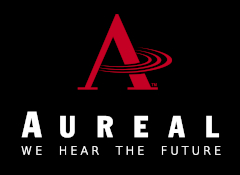








Because of the way the MT-32 offered custom instrument programming it was the only synthesizer that MIDI files written for it could be played on. And because it was so expensive not everybody could afford it. This contributed to the creation of the General MIDI standard in 1991. General MIDI was a set MIDI format with a list of 128 unchangeable instruments over 16 channels (the MT-32 only had 9 channels) so that, unlike the MT-32's ability to program custom instruments, MIDI files would all have the same list of instruments so that no matter what hardware you used to play them back it would sound the same on all of them (more or less).
In the same year Roland built on the GM standard with the release of the first Sound Canvas (the SC-55) and created GS (General Standard or General Sound). GS expanded the original 128-instrument GM standard via variation banks to over 300 instruments (as well as support for the default MT-32 standard, though without its re-programmability) and added a few proprietery MIDI controllers like Reverb and Chorus both of which could be triggered via MIDI data.
From that point on games with MIDI soundtracks almost universally supported the Sound Canvas as the best way to experience them. So much so that Roland created a software wavetable MIDI synthesizer based on the SC-55 for Windows XP called "Microsoft GS Wavetable", though the quality is no where near as good as a real SC-55 and it's missing some MIDI controllers like reverb and chorus among others.
Notable Roland Tone Generators
Roland MT-32
Roland CM-32L
Roland CM-64
Roland SC-55
Supports GM, GS
Roland SC-55 MKII
Supports GM, GS
Roland SC-88
Supports GM, GS
Roland ED SC-8850
Supports GM, GM2, GS
Edirol SD-20
Supports GM, GM2, XG, GS

In 1994, Yamaha released the first XG-based product: Yamaha MU80 Tone Generator. In 1995, Yamaha released the first XG-based product for PC users, the DB50XG daughterboard, a Creative Wave Blaster competitor. In 1996, Yamaha released MU10 external module, basically a DB50XG in a case and later the SW60XG ISA PC card. Coupled with their tone-generator, both devices included an on-board 4MB sound bank chip of sampled instruments and became highly desirable among MIDI fans due to their crisp, high-quality sounds similar to the newer models of the Roland Sound Canvas.
Sondius XG combined the world beating S-YXG50 software XG engine with the already legendary SVA physical modeling techniques used by Yamaha's ground breaking VL1, VL7 and VL-70m tone generators. The system takes the existing S-YXG50 engine and adds 256 preset VL voices conforming to the VL/XG spec of the VL-70m. It also combines the Voice mode programmability and parameters of the VL-70m.
The Sondius XG synthesizer was also built into PCI chipsets manufactured by Yamaha. These chipsets could play 64 sounds at once including their own sounds and samples. They also had DirectSound acceleration and DirectSound 3D. One example of this is the Labway XWave-5000 (YMF724 based soundcard).
Notable Yamaha Based Hardware
Yamaha SW1000XG
PCI card with a quality of sound that rivals that of Yamaha's MU100 tone generator. 1267 normal voices + 46 drum kits. 32 part/64 polyphony. Supports GM, XG
Notable Yamaha Tone Generators
Yamaha MU80
750 tones + 5 block effects + AD input function. Supports GM, XG
Yamaha MU500
Stripped-down version of the MU2000 without the front panel controls, sampler, sequencer, expansion board slots. 1396 instrument sounds + 58 drum kits + optical out + USB. 64 part/64 polyphony. Supports GM, GM2, XG
Yamaha MU2000
1,396 normal voices + 58 drum kits. Supports GM, GM2, XG, GS (w/ firmware upgrade)


USB Soundcards
| Sound Blaster Digital Music (Japan) | Sound Blaster MP3+ (North America) |
|---|---|
| Model | SB0270 |
| EAX Support | EAX 1.0 / 2.0 / EAX ADVANCED HD 3.0 |
| Sound Blaster Audigy 2 NX | |
|---|---|
| Model | SB0300 |
| EAX Support | EAX 1.0 / 2.0 / EAX ADVANCED HD 3.0 |
| Sound Blaster Live! 24-bit | |
|---|---|
| Model | SB0490 |
| EAX Support | EAX 1.0 / 2.0 / EAX ADVANCED HD 3.0 |
| Sound Blaster Digital Music SX (Japan) | |
|---|---|
| Model | SB0560 |
| EAX Support | EAX 1.0 / 2.0 / EAX ADVANCED HD 3.0 |
| Sound Blaster X-Fi | |
|---|---|
| Model | SB1090 |
| EAX Support | EAX 1.0 / 2.0 / EAX ADVANCED HD 3.0 / 4.0 / 5.0, OpenAL |